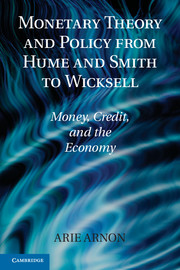Book contents
- Frontmatter
- Dedication
- Contents
- List of Illustrations
- List of Tables
- Preface
- Introduction
- Part one Analytical and Historical Foundations
- Part two Debating Monetary Theory under Inconvertibility
- Part three Debating
- Part four The Road to Defensive Central Banking
- 14 Bagehot and a New Conventional Wisdom
- 15 Does Karl Marx Fit In?
- 16 Marshall’s (Oral) Monetary Tradition and Bimetallism
- Part five A New Beginning
- Bibliography
- Author Index
- Subject Index
15 - Does Karl Marx Fit In?
Published online by Cambridge University Press: 05 July 2014
- Frontmatter
- Dedication
- Contents
- List of Illustrations
- List of Tables
- Preface
- Introduction
- Part one Analytical and Historical Foundations
- Part two Debating Monetary Theory under Inconvertibility
- Part three Debating
- Part four The Road to Defensive Central Banking
- 14 Bagehot and a New Conventional Wisdom
- 15 Does Karl Marx Fit In?
- 16 Marshall’s (Oral) Monetary Tradition and Bimetallism
- Part five A New Beginning
- Bibliography
- Author Index
- Subject Index
Summary
Introduction
Many volumes have been written on Marx’s life, on his intellectual development, and on different aspects of his political and economic writings. In this chapter, we limit the discussion only to those aspects that will facilitate understanding of a relatively neglected topic: Marx’s monetary theory and how it relates to classical monetary theory. In 1846–1847, Marx wrote his critique of Proudhon, in which he accepted both Ricardo’s labor theory of value and his monetary theory (Rosdolsky 1977, p. 2). Although Marx’s first work on political economy did not appear until 1859, he had felt his studies to be drawing to a close as early as 1851; by this time, Marx had already developed a critique of Ricardo’s money theory. The first known important work to include a comprehensive analysis of money – the Grundrisse – was written between August 1857 and March 1858 but was only published in German in 1953.
The first chapter of Grundrisse, entitled “On money,” and the chapter entitled “On money as capital” formed the core of the book published in 1859, A Contribution to the Critique of Political Economy. After this, the Contribution, in its turn, formed the core of the chapters on money in Capital I, which was published in 1867. Thus, we can see three milestones in the development of Marx’s monetary theory during his lifetime: the Grundrisse, the Contribution, and Capital I. After Marx’s death in 1883, Capital volumes II (1885) and III (1894) were published by his friend Frederick Engels. These volumes were primarily written before the publication of volume I in 1867, and were just edited posthumously by Engels.
- Type
- Chapter
- Information
- Monetary Theory and Policy from Hume and Smith to WicksellMoney, Credit, and the Economy, pp. 309 - 329Publisher: Cambridge University PressPrint publication year: 2010

